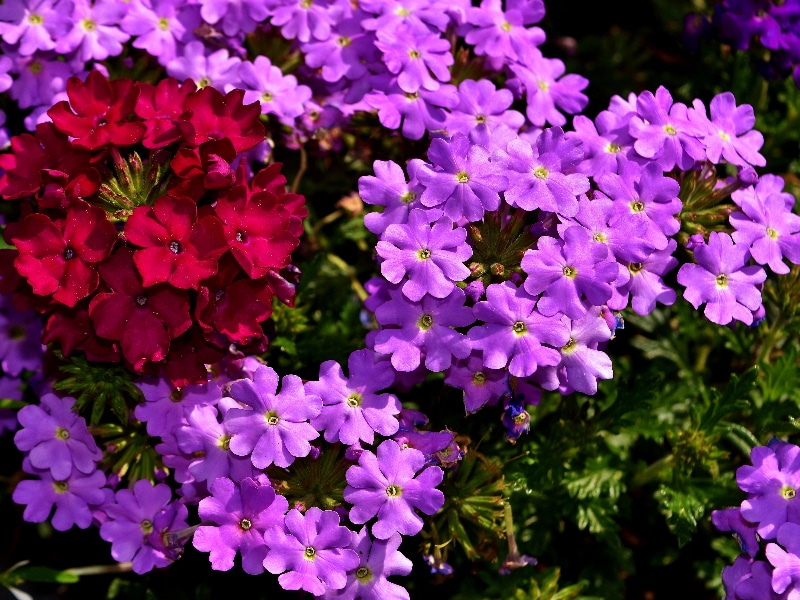You can familiarize yourself with how to grow verbena from seed using three steps. In general, verbena or vervain is easy to propagate, but some gardeners prefer to sow them from seeds instead of cuttings. You can take advantage of a greenhouse in starting verbena from seeds because the controlled environment will ensure germination and development.
More so, knowing how to grow verbena from seed should help you feel more confident that you can sprout them yourself. Once the verbena plants have grown and established themselves, you can benefit from their heat tolerance and long-blooming duration. Indeed, verbena is one of those plants you can have in your garden worthy of starting from seeds.

Comprehensive Guide On How To Grow Verbena From Seed
Step #1. Planning
Much like with other plants that you start from seeds, planning and preparation are crucial since seeds require additional methods, unlike cuttings and divisions. For example, when is the best time you should sow verbena seeds in your region? If your area experiences extreme hotness and coldness, you should opt to start seeds indoors to protect the seedlings.
More so, you have to strategize the planting calendar if you want to get flowers before the growing season ends. Remember that verbena starts flowering late in spring to early summer. It would also be best to grow verbena as annuals because the summer’s heat can encourage spider mites.
Thinking ahead of time will prevent problems with the weather and pests to ensure germination in your growing zone.
Step #2. Planting
As mentioned earlier, sowing verbena is better indoors to avoid problematic weather. Check your hardiness zone because you want to start verbena seeds in the greenhouse 12 weeks before you intend to plant them outdoors. This way, you can avoid the danger of frost by using your calendar dictated by USDA zones.
In an ideal environment, verbena seeds should germinate as early as 20 days; however, it can also take them up to a whole month. Some seeds may also require cold stratification where you put them in a bag and into the refrigerator to break them out of dormancy. Be sure to study the methods of stratification in great detail.
For the sowing itself, a well-draining potting mix should work well for verbena seeds. The medium should be moist, and you can sow seeds per compartment of a flat for easier thinning later on. You must also cover the container with black plastic as verbena seeds require darkness to germinate.
Step #3. Maintenance
The seeds will germinate well under 65 to 70°F and regular misting once a day to ensure they are consistently moist. The whole germination period can take a month or three weeks, so you must maintain these practices. Do not forget to check the seeds and that they are not disturbed by other conditions.
Once the seeds sprout, remove the covering of the containers. You can thin the young plants to 12 inches once they develop their first set of true leaves. At this point, you can also have one verbena plant per compartment.
Transplanting Verbena
The plants that you start indoors will require hardening before you can permanently transplant them outdoors. It would be best if you gently acclimate them to the challenges out for at least a week, and these include sunlight and wind. After the plants harden, you can transplant them when the soil is workable, and the temperature itself is warm.
Care for verbena
Choose an area that receives full sun and allocate 12 inches of space in between them. Maintain soil moisture and feed them with a water-soluble fertilizer. Some gardeners note the difference of blooms when you regularly feed verbena, and you can feed them up to four times per season.
To promote growth and blooming, pinch verbena plants back after a month and add deadheading to your maintenance tasks to help them flower more. Pinching promotes a fuller and bushier look, while removing faded flowers will help the plants create more blooms. Lastly, you shouldn’t worry about diseases and problems because they are easy to avoid with diligent monitoring and prevention.
For example, some common problems are powdery mildew and rot. These conditions are easy to prevent if you monitor the environment using a greenhouse and maintain practices diligently. Verbena can also encounter mites and aphids, but noticing these pests earlier makes them easy to eradicate without turning into a problematic infestation.
Conclusion
Verbena is one of the most beautiful flowers that you can grow in the garden. If you don’t have a source for cuttings yet, you can quickly learn how to grow verbena from seed. Plan the best time to sow your seeds so that you can have flowers in time for the season but still be safe enough from frost.
Once you’ve marked your calendar, you can use the greenhouse to guarantee quick germination by providing the ideal conditions such as temperature and protection from climate changes. You may need to do cold stratification first, but once done, putting the seeds in a moist medium and covering them should get them sprouting in no time. Don’t forget to cover the container and keep the plants moist as well.
After hardening the plants, you can transplant them outdoors once the temperature gets warmer and the soil becomes workable. At this point, you can apply the usual feeding and watering routine without overdoing it. You can also pinch verbena plants to promote bushy growth and deadhead them to encourage more flowers.
